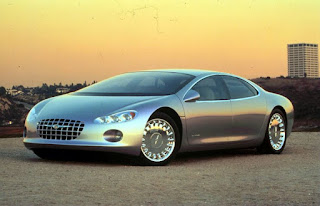Stellantis is the new owner of Chrysler. And very likely its last one.
The new brand name (created by marketers from the Latin word "stello," meaning, "to brighten with stars") consists of a mish-mash 14 Italian, French, German, British, and American automakers including Abarth, Alfa Romeo, Chrysler, Citroën, Dodge, DS, FIAT, Jeep®, Lancia, Maserati, Opel, Peugeot, RAM, and Vauxhall.
The newly minted brand name takes over this month from FCA (Fiat Chrysler Automobiles) a company that oversaw extremely weak US sales not only for Chrysler, but for FIAT, Abarth, and Alfa Romeo. FCA Group acquired Chrysler in 2014.
Chrysler Corporation was of course founded as an American company in 1925 by Walter Chrysler from the remains of the Maxwell Motor Company. In 1998, it was acquired by Daimler-Benz, and the holding company was renamed DaimlerChrysler.
The German-American union was not a happy one, with many differences coming to the surface about the direction of the company. In short, it was a really bad fit.
After Daimler divested Chrysler in 2007, the company briefly existed as Chrysler LLC (2007–2009) and Chrysler Group LLC (2009–2014) before merging in 2014 with the Italian holding company Fiat S.p.A. and becoming a subsidiary of Fiat Chrysler Automobiles.
Chrysler has clearly fallen on hard times. It has two nameplates, the aging 300 sedan (first introduced in 2005) and the Pacifica van (it has an electric version of the van and a stripped-down model now using the iconic Voyager name, but these are just badge-engineering exercises. They have two.)
That's really sad for several reasons, not least is which that company has a recent history of innovation and large, exciting lineups. Lee Iacocca revived the company from bankruptcy and (paid back government loans - early!) with the K-Car line. In the 1990s, the company had success after success with exciting concept cars that they brought to market. Among them was the PT Cruiser, which sold in the millions.
The 300, back in the day, was also a huge hit. The Crossfire fired imaginations, and the LHS was a gorgeous car that made it to production as a beautiful vehicle, part of the "cab-forward" design style that captured America's imagination. They introduced many new nameplates that sold well in that era.
The company could use a dose of the spirit of the '90s and early 2000s right about now - a spirit that showed many
concepts taken to the market, a daring can-do spirit that showed it was a bold car designer, not just a retread, recycling old nameplates on boring vehicles, as they are now.
The once-luxury brand has no top-of-the-line "halo car," no SUVs, no mini-Utes (the hottest vehicle type on the market) and no sports cars for middle aged men to buy during their mid-life crises.
Last year sales were anemic. It sold around 110,500 vehicles, about one-third its volume in 2015, according to company figures.
Fiat, a maker of small cars reintroduced to the US in 2011, also saw a sharp drop-off in sales.
Experts believe there is a consolidation of the new car conglomerate's 14 brands coming, and that doesn't bode well for Chrysler.
One news site suggested that Chrysler was already dead (as a name, anyway) when their sign was replaced with the Stellantis one at their storied Auburn Hills, Michigan headquarters.
Regardless of when it happens, it almost seems inevitable that the brand is going to fade away, unless someone in the new company's Amsterdam, Holland headquarters decides to revive it in a BIG WAY.
It's not hard to see how it could regain its footing. It must launch a solid, stylish luxury SUV. It must launch a dependable mini-UTE that actually stands out from its many vanilla competitors, and it must launch a hot sports car that captures imaginations.
That's a tall order, since new vehicles take 2-5 years to produce through the traditional auto design pipeline. But these are not ordinary times, and innovation is called for if Chrysler hopes to survive to see its 100th birthday.
___________________________________
Auto Styling News is a blog that covers car concepts, newly released models, and the auto industry.





